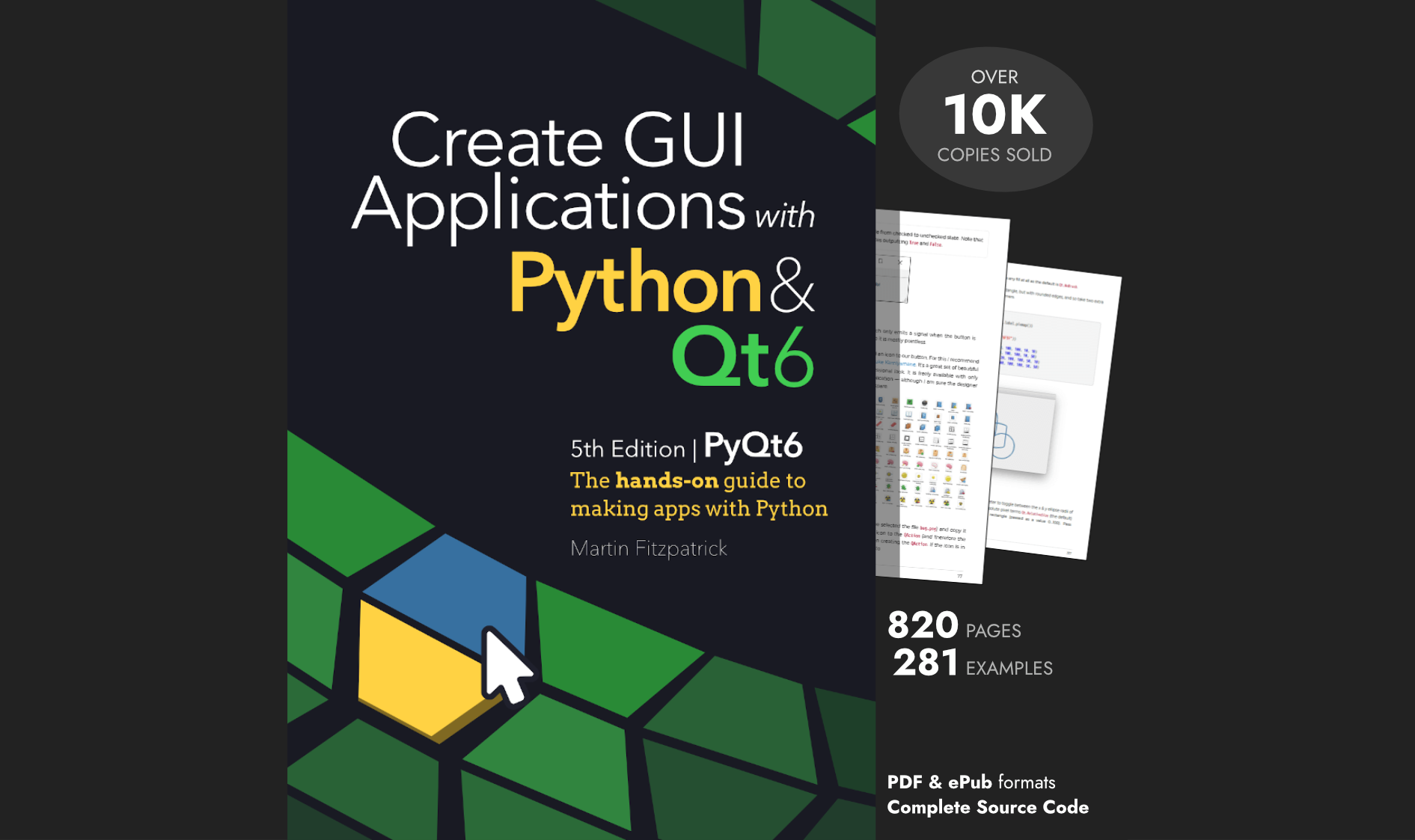Hello! This morning I released a new update to my PyQt5 book Create GUI Applications, with Python & Qt5. This is an enormous update, expanding it from 258 to 665 pages and adding 211 complete code examples.
To celebrate the milestone the book is available this week with 20% off. Readers get access to all future updates for free, so it's a great time to snap it up!

This is the 4th Edition of the book and adds a number of entirely new chapters including MVC-like model views, SQL database-views, plotting with matplotlib & PyQtGraph, custom widgets & bitmap graphics, concurrent programming with threads and processes and theming Qt applications.
Existing chapters have been expanded with more examples and step-by-step guides to using them. All source code shown in the book is available as standalone, runnable, examples to try out and experiment with.

Chapters have been updated and expanded with new examples and more detailed explanations and diagrams. Cross-platform screenshots show how your application will look on different systems. Starting from the basic principles of GUI development in Python and building up to more complex topics.
Create GUI Applications with Python & Qt6 by Martin Fitzpatrick — (PySide6 Edition) The hands-on guide to making apps with Python — Over 10,000 copies sold!

Learn how to use Qt's MVC-like model views architecture to sync data with widgets, including querying and editing SQL databases from within your applications.

Tired of the default application look? Use styles, palettes and Qt Style Sheets to completely customize the look and feel of your applications.

Discover how to create your own widgets to use in your Qt applications. Starting from the basics of bitmap graphics and building up to a fully-customizable widgets.

Use threads an processes to perform long-running calculations or communicate with remote services, without locking up your applications. Receive data back from threads and processes and display progress bars. Stop and pause running jobs from your UI.

Visualize data inside your applications, using matplotlib or PyQtGraph. Sync plots with external threads to create live updating dashboards to visualize data in real-time.
There is also a PySide2 edition of the book available, which features largely the same content, with examples converted to "Qt for Python". Purchasing either book gets you access to both editions, including any future updates of either.
Feedback, as always is very welcome!
Get the PyQt5 book Get the PySide2 book

